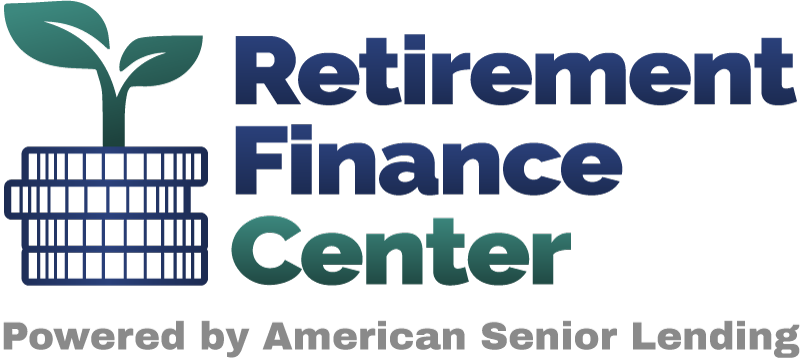5-Ways To Pay For In-Home Care
1. Cash-Out Refinance
A cash-out refinance is a mortgage refinancing option that allows qualified homeowners to access their home’s equity by borrowing more than the remaining balance on their existing mortgage. Here’s how it works:
- The homeowner refinances their current mortgage with a new one that has a higher principal balance.
- The difference between the new loan amount and the old mortgage balance is received as cash.
- This cash can be used to cover in-home care expenses or other financial needs.
A cash-out refinance offers several advantages for homeowners seeking to fund in-home care:
- Lower interest rates compared to unsecured loans.
- Potential tax advantages, as mortgage interest may be tax-deductible.
- Fixed monthly payments for predictable budgeting.
 However, it’s important to consider that a cash-out refinance increases the overall mortgage debt, which means higher long-term costs. Additionally, eligibility depends on creditworthiness, home equity, and other factors. This is not financial advice, please speak with a tax advisor if discussing potential tax liability
However, it’s important to consider that a cash-out refinance increases the overall mortgage debt, which means higher long-term costs. Additionally, eligibility depends on creditworthiness, home equity, and other factors. This is not financial advice, please speak with a tax advisor if discussing potential tax liability
2. Reverse Mortgage Line of Credit
A reverse mortgage line of credit is a financial product specifically designed for seniors aged 62 and older who own their homes outright or have substantial home equity. It allows qualified homeowners to convert a portion of their home’s equity into a flexible line of credit, which can be used to cover various expenses, including in-home care. Here’s how it works:
- Seniors can access funds from the line of credit as needed.
- The loan is repaid when the homeowner sells the home, defaults on the terms of the loan, or no longer lives there as their primary residence.
Reverse mortgage line of credit offers several advantages:
- No monthly mortgage payments are required as long as the homeowner lives in the home, continues to pay property taxes, home insurance and maintains the home.
- The line of credit can grow over time, providing additional funds for future needs.
However, reverse mortgages have associated fees and interest rates, and the loan balance can grow over time, potentially reducing the equity available to heirs.
3. Reverse Mortgage
A reverse mortgage is another option for qualified homeowners seeking to access their home’s equity to fund in-home care. Like the reverse mortgage line of credit, it’s available to homeowners aged 62 and older. With a reverse mortgage:
- Homeowners can receive funds as a lump sum, monthly payments, or a line of credit.
- The loan is repaid when the homeowner sells the home, no longer lives there as their primary residence, passes away, or defaults on the loan terms.
Reverse mortgages offer the following features:
- No monthly mortgage payments are required as long as the homeowner lives in the home. However, they must continue to make payment on property taxes, insurance and maintain the home as normal.
- The funds can be used for any purpose, including in-home care.
However, similar to the reverse mortgage line of credit, reverse mortgages come with fees and interest rates, and the loan balance can increase over time.
4. Home Equity Line of Credit (HELOC)
A Home Equity Line of Credit (HELOC) is a financial product that allows qualified homeowners to borrow against the equity in their homes. It operates similarly to a credit card, with homeowners having access to a line of credit that they can draw from as needed. Here’s how it works:
- The homeowner’s equity serves as collateral for the line of credit.
- Monthly payments are typically required, consisting of both principal and interest.
HELOCs offer the following advantages:
- Typically lower interest rates compared to unsecured loans.
- Flexibility to borrow and repay as needed.
- Interest on the HELOC may be tax-deductible if used for home improvements.
However, it’s important to be aware that a HELOC requires monthly payments, and interest rates can vary over time, potentially impacting the overall cost.
5. Sell Your Life Insurance Policy For Cash
You can take advantage of a little known legal precedent from 1911 and sell your life insurance policy to investors. Your life insurance policy is an asset and may have value – just like your stocks, bonds, and equity stored in your home.
If you’re over 65 and have a life insurance policy (especially a universal life policy) over $100k, this could be a great option for you. We recommend connecting with our friends at Encore Life, who can help appraise your policy and understand your options.
Selling your life insurance policy is a strategic financial transaction that enables you to sell your life insurance policy to a third party for a lump sum payment, often significantly greater than its surrender value. This can be an ideal solution for policy owners looking to free up cash for various purposes, including:
1. Supplementing Retirement Income: Selling your life insurance policy could provide a valuable source of additional income during your retirement. This infusion of funds could enhance your financial stability, help cover daily expenses, or allow you to enjoy those dream vacations you’ve been planning.
2. Settling Outstanding Debts: As we age, we often find ourselves managing various financial obligations. Whether it’s mortgages, medical bills, or other debts, a life insurance settlement can help alleviate the burden, allowing you to live more comfortably.
3. Fulfilling Bucket List Dreams: Retirement is the perfect time to check off items on your bucket list. Whether it’s traveling, exploring new hobbies, or spending quality time with family, the extra funds from a settlement could turn these dreams into reality.
4. Covering Long-Term Care Costs: As you age, health considerations become increasingly important. Selling your life insurance policy could help cover the expenses associated with long-term care or unexpected medical bills.
Conclusion
In-home care is a crucial service that allows seniors to age in place with dignity and comfort. While it comes with a price tag, homeowners have several viable options to help them afford in-home care, including cash-out refinances, reverse mortgages, home equity lines of credit, and selling your life insurance policy for cash.
Remember that the right financial solution will depend on your unique circumstances, and it’s important to choose an option that aligns with your financial objectives while ensuring your comfort and well-being during your golden years. With the right planning and financial strategy, you can confidently navigate the path to in-home care and enjoy a fulfilling and independent retirement.
